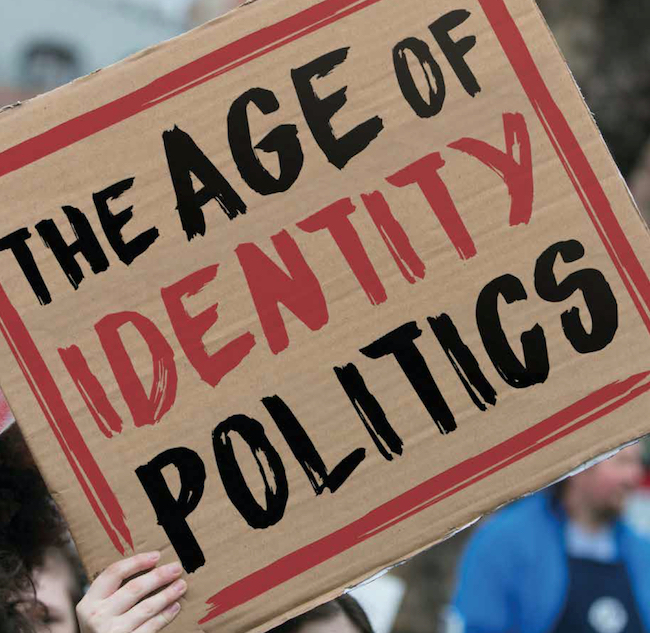Since Anthropology emerged as a scientific discipline in the 19th Century the coined phrase Indigenous and Tribal Peoples have been a major focus. According to the UN Permanent Forum on Indigenous Issues there is reported to be 370 Million so called Indigenous people in 90 countries globally (Reported By the UN). Approx 70% live in Asia. There is reported to be 5,000 ethnic Cultures of Indigenous People
The Rights & Interests of so called Indigenous Peoples are recognized through various International Declarations Eg; 1989 Internation Labor Org., Convention (No 169) * 1992 UN Convention on Biological Diversity * 2007 UN Declaration On The Rights Of Indigenous Peoples (UNDRIP) The UNDRIP covers Civil, * Political * Economic *Social * Cultural *Environmental Rights & Interests under International Law (Also Human Rights Laws)
The UNDRIP imposes Obligations , Commitments on UN Member States, Organizations & Inter-governmental bodies. Included is the International Work Group for Indigenous Affairs http://www.iwgia.org/culture-and-identity/ identification-of-indigenous-people) Also a growing body of Human Rights Entities
The Diversity of Indigenous peoples was adopted by the UN System, where a modern understanding of this was utilized worldwide. The modern understanding of the coined phrase Indigenous Peoples met the following criteria by the UN as ‘Self-Identification ‘ *Historical continuity with Pre-colonial History and / or Pre-Settler Societies * Accepted by their Tribal Community *Ancestral environment. Indigenous Peoples were historically referred to as Tribal or Native Peoples
There is Official Universal definition of the coined phrase Indigenous Peoples in International Law. (UN). Although various UN Agencies and International NGOs- Corporations etc., with self interests also Central/Local Govts of UN Nations States have utilized the coined phrase Indigenous Peoples as to Regulations- Policies- Political and Monetary self -interests.
In the 1970’s the coined phrase was used as a way of linking experiences, issues, struggles of groups- ( De-Colonization). The first meeting of the UN Working Group of Indigenous Populations (WGP) took place 9/8/1982. Is now celebrated as the International Day of the Worlds Indigenous People. Again – No definition of Indigenous People was adopted by the UN Agency. The Secretariat of the Permanent Forum on Indigenous issues stated.
In the “concept of Indigenous Peoples the prevailing view today, is that there is No Formal Universal Definition on the term ‘Indigenous Peoples – given that a single definition will inevitably be with or with (over or under) inclusiveness- thus making sense in some societies but not in others”. However a number of UN Agencies have used the term Indigenous Peoples on Statements, coverages for certain International Agreements (But these are definitions used for particular reports)
Another example is that the Inter-American Commission On Human Rights doesn’t provide a definition of Indigenous Peoples, but have stated that ‘Self-identification’ as being a fundamental criteria’. Manvir Singh an Anthropologist states there’s a lack of coherence, inconsistencies in which ethnic groups are called Indigenous or not. People argue the term. Have pressure put on them to self identify themselves as Indigenous People’. Thus erasing Identification. This varies from one country to another. Adding – There is no accepted Universal Definition of the coined phrase Indigenous Peoples
The UN ILO International Labour Org., twice adopted definitions of Indigenous Peoples at their Conventions in 1957 & 1989. Only a few countries acknowledged it therefore could not be used in International Law. Only by the countries that adopted the definition. The World Bank definition of Indigenous People is not Binding by International law as it is determined within Banks Operational Policies * Policy Guidelines. Documents and Agreements of ‘Good Faith’
UN Agenda 21 (1992) recognized the potential contribution in using the coined phrase Indigenous Peoples referring to Sustainable Development. The 2024 UN Biodiversity Conference (COP 16) UN Nation States agreed to a new permanent body for Indigenous Peoples. Which allows them to advise COP members on Biodiversity (An Indigenous worldview) on Sustainability.
From the UN 1993 World Conference on Human Rights- the (UN Vienna Declaration ) was adopted- recognizing the culture of Indigenous Peoples. Described as a ‘Strong Commitment to – Economic *Social*Cultural Wellbeing. (The enjoyment of the Fruits of Sustainable Development) 9th August 1994 UN proclaimed as International Day of the Worlds Indigenous People (Their Rights & Interests) 1995 UN launched the Decade of the Worlds Indigenous Peoples. (UN Resolution 49/214) Furthering-Advancing the Global Agenda
The UN in 2021 referenced the UN Human Rights & Fundamental Freedoms of Indigenous Peoples. To be documented into International laws Namely ‘Under the Umbrella of Social Justice. Dystopia ‘ Some Animals have more rights than others.
Te Pati Maori’s strong connection to the UNDRIP (Universal Declaration on the Rights of Indifenous Peoples). First adopted on 13th September 2007 at the New York UN Assembly. It had taken 20 + years to draft. There was much debate and discussion during this time on the UNDRIP by the working group at the UN
. Te Pati Maori actively engage in the Principles of the UNDRIP (Seld Governance). With Te Tiriti o Waitangi committed to the UNDRIP. Several Kerero Constitutional Conventions held at Auckland University. Preplanning the embedding of the UNDRIP into NZs Constitutional Arrangements. The UNDRIP being a crucial tool for Iwi/Maori Self-Governance
Although NZ Rejected the UNDRIP in 2007 – John Key and Pita Sharples Deputy leader of the Maori Party made a deal. Under a veil of secrecy Pita Sharples attended the UN and adopted the UNDRIP for NZ. When John Key was asked by the secrecy his response was “I did not want to spoil Pita Sharples Thunder’. New Zealand’s have no say when it comes to the State adopting International Laws. NZ is a party to some 1900 International Agreements.
Although the UNDRIP is Non-Binding there is also a commitment, obligation to pursue it, implement it. Its not legally Legislative. Sit outside Hard Law as a Soft Law, can be used– called upon- referenced by the Judicial. Unless it is embedded in NZ Domestic Laws its Non Binding. (But there are serious implications when it comes to implementing the UNDRIP in NZ.
It all lies in the 2007 UNDRIP adoption in the New York UN Assembly where Rosemary Banks Representative of NZ shared with the assembly why NZ would not adopt it. Its extremely important to know why because this is the real reason for the Hikoi. For David Seymour being attacked. Spoiling Te Pati Maori and their activist collaborators thunder for their self interested preplanning for their future self interests. (The reasons for the insame aggressive behavior in Parliament)
Lets get to the root of the course.. Firstly the UNDRIP adoption into legislation is crucial for the Self Governance of Iwi/Maori. UNDRIP is a crucial tool- a weapon of aggression… NZ * US * Canada * Australia did not ratify the Declaration at this time…Rosemary Banks was NZs Representative at the UN New York Assembly at the time.
She explained to the gathering why NZ would not sign the UNDRIP. (1) It gives Indigenous Peoples Control- ownership of Entire Lands of NZ (2) Did not take into account that people already legally-lawfully owned land (Had Property Rights) (3)Redress- Compensation for Entire Lands of NZ (Ownership- Control of All NZs Natural Resources (4) Veto Rights Over Legislation (5) Two Classes of Citizenship).
Winston Peters states NZ First will dump the UNDRIP (That’s not happened yet). David Seymour is skirting around the edges not talking about the UNDRIP. But targeting how Farmers are having to seek Cultural Rights on their lands by Iwi Tribal Groups. And that Council.
Such as Auckland Council has an Iwi Advisory Independent Group where people , businesses, farmers have to seek their advice on Resource Management Consents. (Co-Governance – Veto Rights are already (still) being implemented. ACT PARTY now have a Petition online to Dump Te Mana Te Wai it appears regulations, rules are being made by those whom have Iwi/Maori ancestry
Race Based Politics. Critical Race Theory is rife in New Zealand right throughout the system. Education.. Politics.. Society..Environment.. Health. This is not a Healthy situation for NZ. If we remain quiet about this then we enable it. We must speak up. Ignore being character assassinated as Racist. Don’t self censor and don’t be censored. This is Separatism- not unity- this is Apartheid
WakeUpNZ
Researcher: Cassie
...


